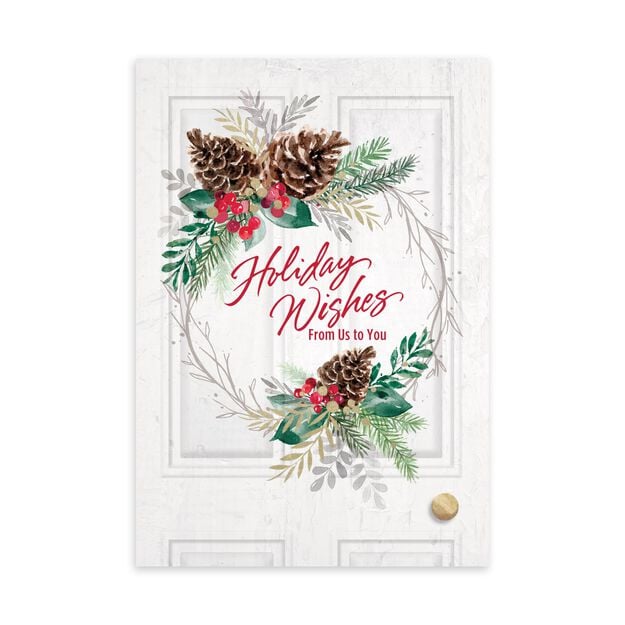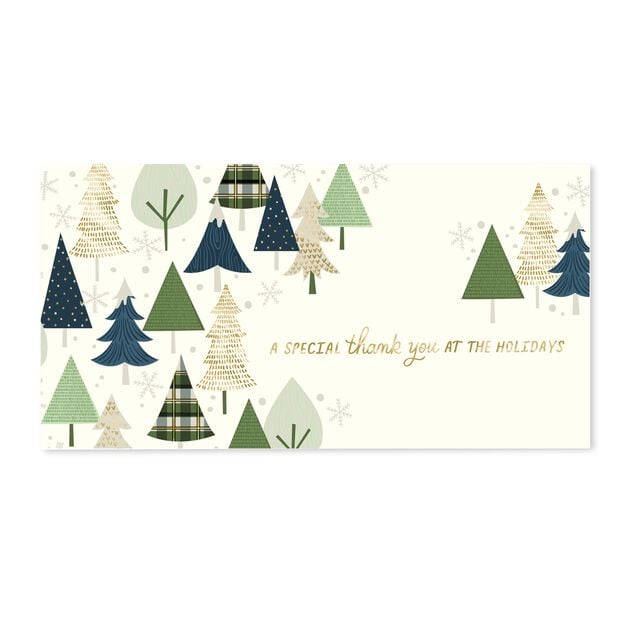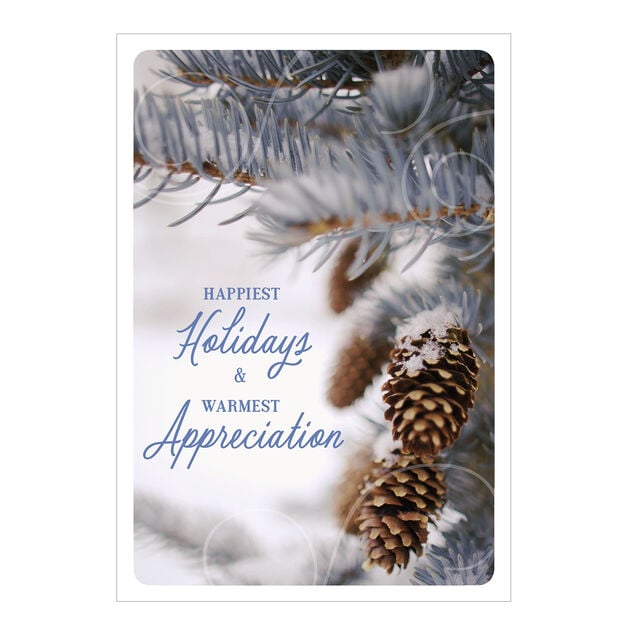Could You Be a Holiday Greeting Card Away From Improving Your Customer Relationships?

It’s hard to imagine the year-end holiday season without greeting cards. The practice of exchanging warm notes between Thanksgiving and New Year’s Day dates back to the 19th century. At that time, the first printed Christmas postcard made its rounds, sparking a worldwide passion that remains strong to this day.
Holiday greeting cards aren’t just pieces of paper, though. They’re emotional touchpoints. It’s not uncommon to walk into a house or office during the holidays and see a display brimming with greeting cards—everything from traditional Christmas cards to family photo cards to fun holiday cards—all designed to boost holiday cheer and express gratitude to your nearest and dearest.
Many people cherish and keep this special type of mail because of the artistry and papercraft, but most importantly because of the personal messages handwritten inside. It’s especially meaningful when someone takes the time to connect and even more so when that gesture arrives by mail.
The magic of greeting cards also extends beyond friends and family. As a business owner or marketer, you can use holiday greeting cards to earn a place on your customer’s mantel and stay top of mind throughout the season. Differentiate your holiday greeting card from the run-of-the-mill holiday business card by sending beautifully printed cards customized with a handwritten message or a personal font that mimics natural handwriting. That way, your cards can stand out for their authenticity and sincerity while allowing you to express your appreciation in a genuine way.
Will your customers respond? Chances are strong they will.
In a study by the Greeting Card Association, 8 out of 10 customers said that social media touchpoints can’t replace the impact of greeting cards. Yet plenty of businesses only use digital means, such as email and social messaging, to connect with clients and consumers during the holidays. Others might send direct mail pieces, but these are usually sales flyers or jumbo postcards filled with product features and promotional marketing messages. This type of corporate mail doesn’t carry nearly the same emotional impact as greeting cards.
If you’re new to the idea of sending individualized holiday greeting cards to clients as a different type of direct mail initiative, consider these tips to start your card on the right note:
The bigger year-end holidays tend to cascade from one to the other, so make sure you time your delivery correctly. For instance, Thanksgiving cards expressing gratitude and the importance of close relationships should be mailed well in advance of the feast. Hanukkah, Kwanzaa, and Christmas greeting cards can be mailed a little later, but soon enough so they can be used as decor if your recipient is so inclined. If you’ve started planning a little late, opt for New Year’s greeting cards instead.
2. Keep the focus on the holiday.
Maybe you only send greeting cards to current customers (like 91% of small businesses who mail holiday cards), or perhaps you go the extra mile and expand your greeting card list to past shoppers and prospects. Either way, it’s totally acceptable to include your logo inside your greeting card or on its back cover. However, don’t make the card look like a marketing piece. It should be a greeting card before anything else.
3. Nix the sales language.
Keep your holiday greeting card’s messaging warm and personal—and deliberately not promotional. A salesy card might backfire with your target audience. While you certainly may want to include a small holiday gift in your envelopes, be cautious. A holiday greeting card from your business should truly be about developing and enhancing your customer relationship as well as staying away from anything that could come across as a sales message.
4. Add a thoughtful closing.
You don’t have to write much inside each greeting card, but you should go beyond just signing your name—or the name of your department—under the preprinted message. Even if you only jot down a few thoughtful words, you’ll show that you were thinking of the recipient as an individual.
For example, you may wish to add a personal note based on your knowledge of the customer’s family—mentioning a spouse, kids, grandkids, or a beloved family pet. Find more inspiration for your card message in “What to Write in a Holiday Card for Employees and Customers.”
5. Remember your employees, too.
Whether you lean toward traditional messaging like nearly 60% of companies that send end-of-year greetings, or more contemporary content like 25% of brands, know that your holiday business cards aren’t just for your customers. They’re ideal for solidifying relationships with your core team members, too. A holiday card is the perfect cap to a year and an excellent way to send an employee retention message that will be noticed and treasured.
This holiday season, express appreciation for your employees by surprising them with a holiday greeting card direct to their mailbox. A personalized employee holiday greeting card shows you value them. Consider a photo card featuring the team at a conference or at the company picnic for that added personal touch.
Direct mail campaigns offer some of the highest returns on investment compared to their digital counterparts—often five times as much! And they don’t have to be formal to work. Read our whitepaper on the benefits of using greeting cards as part of your corporate marketing solutions to increase loyalty, drive engagement and boost revenue.
Oh, and have a happy holiday season!
Shop Holiday Cards NowIn this Article
Products
Similar Articles

Leading Boldly Through Change with Katarina Berg
Dec 19, 2025
The Heart of the Hustle with Claude Silver
Nov 04, 2025










